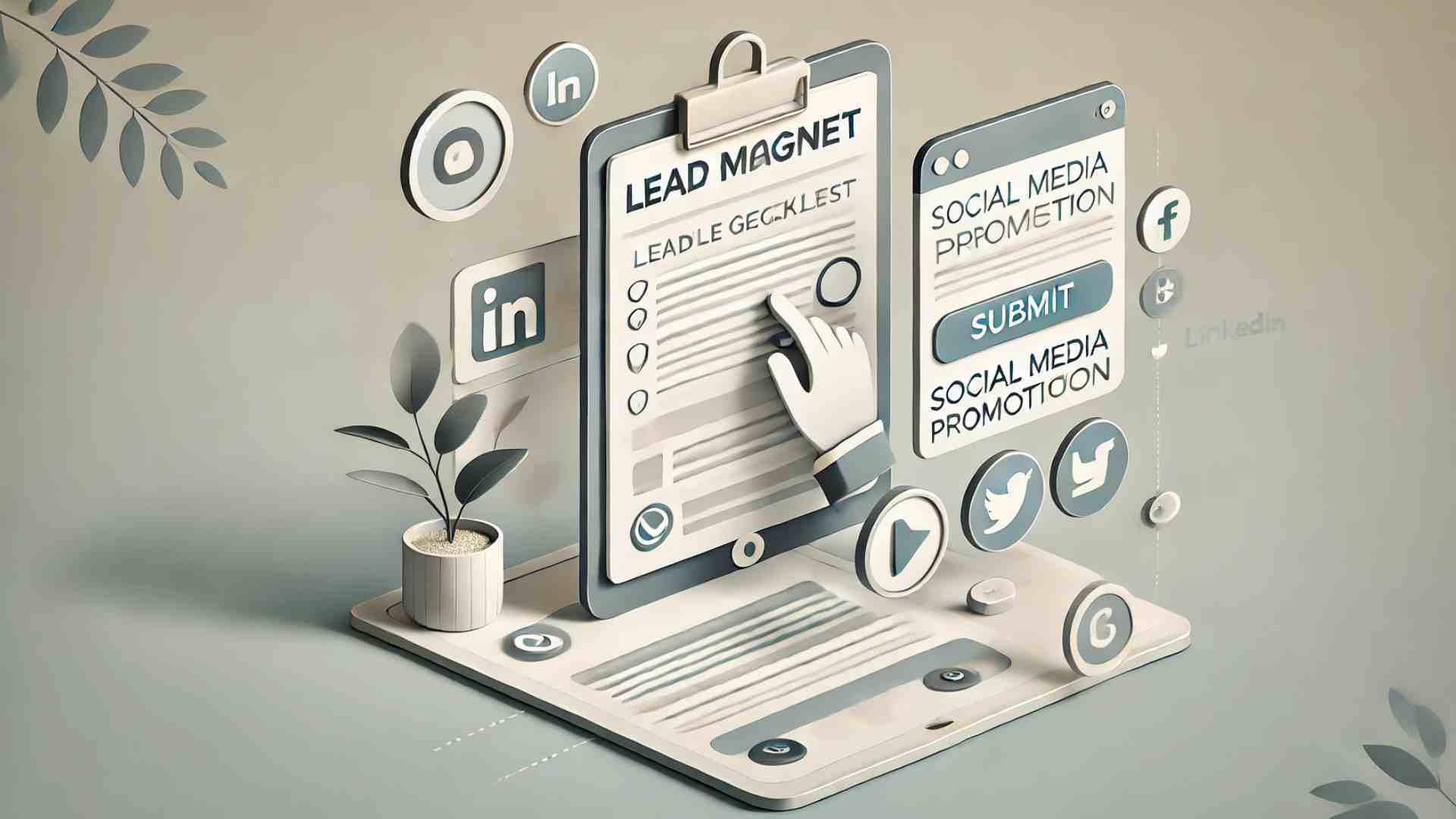
For startups, generating leads is one of the most critical yet challenging aspects of growing a business. With limited resources and an ever-competitive market, standing out and attracting the right customers can seem daunting.
Lead-Generating B2B Marketing Strategy
However, with the right strategy, even a lean startup team can build a powerful lead generation engine. In this post, we’ll dive into a three-step approach specifically designed for startups looking to generate more B2B leads in 2024.
Create a Compelling Lead Magnet
A lead magnet is a valuable piece of content or an offer that you provide to your target audience in exchange for their contact information, usually an email address. For startups, a lead magnet is a powerful tool that helps you quickly identify and capture the interest of potential customers.
Lead magnets can take many forms, including eBooks, checklists, webinars, or even free trials of your product. The key is to create something that directly addresses a pain point your target audience faces. As a startup, your lead magnet doesn’t need to be overly complex. What matters is that it provides immediate value.
For instance, if your startup offers a SaaS platform for managing remote teams, you might create a lead magnet titled “Top 5 Strategies for Boosting Remote Team Productivity.” This type of resource is highly relevant to your audience and positions your product as a potential solution.
When you're just starting out, it’s often best to keep your lead magnet simple. A well-designed checklist or a quick-start guide can be highly effective. As you learn more about your audience's needs and pain points, you can develop more comprehensive resources, such as detailed case studies or in-depth reports.
The goal is to offer something valuable that your target customers are eager to exchange their contact information for. This not only helps you build your email list but also sets the stage for nurturing these leads into paying customers.
Build a High-Converting Landing Page
After creating a lead magnet, the next step is to design a landing page that converts visitors into leads. A landing page is a standalone web page with one primary purpose: to get visitors to take a specific action, such as downloading your lead magnet.
For startups, every lead is precious, so optimizing your landing page for conversions is crucial. Here’s how you can make your landing page more effective:
-
Target Your Audience: Your landing page should clearly state who it’s for. This helps attract the right people and ensures that those who aren’t your ideal customers self-select out. For example, if your lead magnet is designed for startup founders, make sure your landing page explicitly states that.
-
Offer Clear Value: Clearly communicate what visitors will receive by providing their email address. Explain the benefits of your lead magnet in detail. For instance, instead of just saying “Download our free guide,” you could say “Download our free guide to discover the top strategies for scaling your startup in 2024.”
-
Establish Credibility: Highlight why your startup is qualified to provide this information. Mention any relevant experience, client successes, or industry recognition that boosts your credibility. For example, if your startup has been recognized by a reputable industry organization or has worked with notable clients, make sure to mention it.
Promote Your Lead Magnet Consistently on Social Media
With your lead magnet and landing page ready, the next step is to drive traffic to your landing page. For startups, social media is one of the most cost-effective ways to do this. Platforms like LinkedIn and Twitter offer significant organic reach, making them valuable channels for promoting your lead magnet.
Here’s how to make the most of social media:
-
Post Regularly: Consistency is key to building an audience and generating leads. Post valuable, relevant content on your social media channels daily. Share insights, tips, and updates that resonate with your target audience. Each post should include a call to action that directs followers to your landing page.
-
Leverage LinkedIn and Twitter: These platforms are particularly effective for B2B startups because they allow you to reach decision-makers and professionals in your target market. LinkedIn, in particular, offers robust organic reach, meaning your posts can get significant visibility without paid promotion.
-
Engage with Your Audience: Social media is not just about broadcasting your message—it’s about engaging with your audience. Respond to comments, participate in relevant discussions, and connect with potential leads. This interaction builds relationships and increases the chances that your audience will trust and engage with your content.
Consistency in posting and engagement is vital. Over time, this approach helps you build a community around your brand, increases your visibility, and drives a steady flow of leads to your landing page.
Optimization is Critical for Success
Once you’ve implemented these three steps, it’s essential to track your results and continuously optimize your strategy. Monitor your landing page’s performance, your social media engagement, and the overall conversion rates of your lead magnet.
If you notice certain types of posts or content themes performing better than others, adjust your strategy to focus more on what’s working. Similarly, if your landing page isn’t converting as well as you’d hoped, experiment with different headlines, calls to action, or design elements.
Lead-Generation is an Ongoing Investment
Generating B2B leads for a startup is all about focus, consistency, and value. By creating a compelling lead magnet, building a high-converting landing page, and promoting your content consistently on social media, you can build a lead generation machine that fuels your startup’s growth.
Startup Hub